Key Highlights
- Expert MEP clash resolution services streamline construction projects by identifying and resolving clashes in MEP systems efficiently.
- Utilizing advanced clash detection technologies such as BIM and 3D modeling tools enhances project coordination and reduces rework.
- Proactive clash detection strategies help project managers mitigate issues early, ensuring smoother project timelines.
- Collaborative solutions among stakeholders foster effective communication and alignment in resolving MEP clashes.
- Future trends indicate the integration of AI and machine learning for predictive analytics in preemptive clash resolution in construction projects.
Introduction
In construction, where building information mixes with design and execution, good project management is crucial. MEP Clash resolution services, also known as clash detection in BIM, play a vital role in ensuring a seamless construction process. These services utilize BIM coordination Software to identify and resolve potential clashes between Mechanical, Electrical, and Plumbing systems in real time. By addressing these issues early in the design stage, MEP clash detection can save money, prevent delays, and streamline the building process. This blog post will delve into the importance of MEP clash detection, how it contributes to today’s construction projects, and some best practices for effective clash resolution strategies with a focus on user interface.
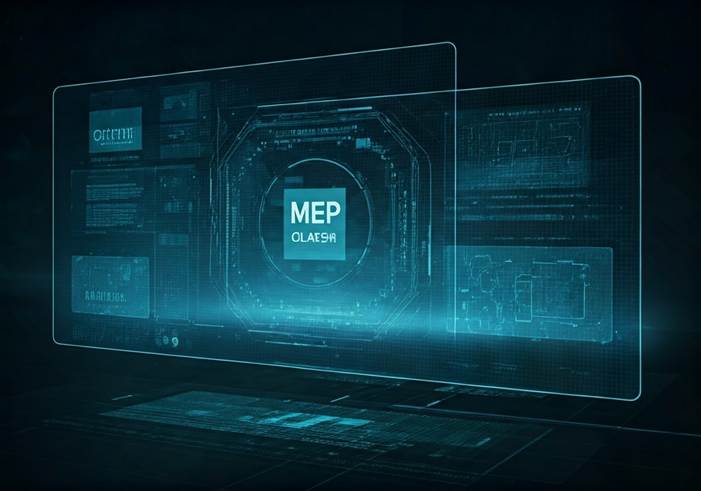
How useful is clash detection outside of the design phase?
Clash detection is most useful during the design phase, but it is also helpful later on. In the construction phase, clash detection makes sure that prefabricated elements, before being installed on-site, meet project standards and avoid problems. It serves as a last check to reduce unexpected issues on-site.
However, it cannot be used during the planning phase because a complete building information model (BIM) is required. It is also less relevant after construction since it does not work with existing buildings.
Overall, doing clash detection well in the design phase helps improve all the stages that follow.
Understanding MEP Clash Detection in Construction
MEP clash detection is an important part of building information modeling (BIM). It helps create digital models of a building’s features. MEP systems include mechanical, electrical, and plumbing parts. These systems are often complicated and overlap with each other. Because of this, it is important to find and fix possible conflicts among them. This helps to prevent expensive mistakes during construction.
The Importance of Clash Detection for MEP Services
The role of clash detection for MEP services in the construction process is very important. MEP systems are key to how a building works and keeps people comfortable. If there are any clashes between these systems, it can cause major issues, such as:
- Construction Delays: Finding clashes while building can stop work, as teams rush to solve problems. This causes delays and messes up project schedules.
- Cost Overruns: Fixing these clashes often means expensive repairs, wasting materials, and added labor costs, which can harm budgets.
- Compromised Safety: Clashes can make the job site dangerous, increasing the chance of accidents and endangering worker safety.
That is why using a strong clash detection process for MEP is vital. It helps reduce these risks and makes sure the construction project is a success.
How Clash Detection Contributes to Seamless Construction Processes
Clash detection is very important for a smooth construction process because it helps:
- Early Issue Identification: Finding problems early in the design stage helps fix issues before they become expensive construction delays or rework.
- Improved Collaboration: Clash detection promotes good communication and teamwork among project stakeholders, like architects, MEP engineers, and contractors.
- Reduced Rework and Delays: Solving clashes in a virtual setting means less need for slow and costly rework at the construction site, which helps keep the project on time.
When project teams use clash detection as a key part of the construction process, they can coordinate better, lower risks, and finish projects more efficiently.
The Role of BIM in Enhancing MEP Clash Detection
Building information modeling, or BIM, has changed how we design, build, and manage buildings. A major benefit of BIM is in MEP clash detection. BIM gives a team a shared model to work on. This setup helps different groups spot and fix issues before they become problems.
Integrating BIM with MEP Engineering for Effective Clash Resolution
BIM software is very important for solving clashes effectively. It helps by providing:
- Centralized Model: BIM acts as a main space where all project data is stored. This allows MEP engineers to see and work with their designs alongside other teams.
- Clash Detection Tools: Good BIM software has tools for clash detection that automatically find possible issues between MEP systems and other building parts.
- Visualization and Analysis: BIM’s 3D visualization features help MEP engineers to look at clashes clearly. They can understand how different parts fit together, allowing for better decision-making.
BIM Levels Explained: From Basic to Advanced Clash Detection
BIM levels, ranging from 0 to 3 and beyond, represent the level of collaboration and data integration in a BIM project. Higher BIM levels generally correspond to more sophisticated clash detection capabilities.
BIM Level | Description | Clash Detection Capabilities |
Level 0 | Traditional CAD drawings | Limited to no clash detection |
Level 1 | 2D or 3D CAD models with limited data exchange | Basic clash detection based on geometry |
Level 2 | Collaborative 3D BIM models with shared data | Advanced clash detection, including soft clashes and workflow clashes |
Level 3 | Integrated BIM models with real-time collaboration | Real-time clash detection and resolution, leveraging cloud-based BIM solutions for seamless coordination |
Types of Clashes in MEP and Their Impact on Projects
In MEP clash detection, it is important to know the different types of clashes and what they mean. Clashes are mainly divided into three types: hard clashes, soft clashes, and workflow clashes. Each type shows a specific conflict that can happen during the design and construction process. It is very important to identify the type of clash correctly for a good resolution.
Identifying and Understanding Hard Clashes
Hard clashes, which are the simplest type of clash, often occur when two or more building elements compete for the same space. These clashes can pose significant challenges during construction, highlighting the importance of MEP clash resolution services. By utilizing clash detection in BIM and BIM coordination software, potential issues such as a duct run colliding with a structural beam or plumbing pipes obstructing electrical conduits can be identified early on. This enables informed decisions to be made to adjust layouts or sizes of the conflicting elements, preventing costly rework, delays, and additional expenses during the construction phase.
Soft Clashes and Their Effects on Construction Timelines
Soft clashes are different from “hard” clashes. They don’t involve direct physical contact. Instead, they come from conflicts about space or failing to meet needed clearances. These clashes usually deal with things like access, maintenance, and rules that must be followed. A soft clash happens when there isn’t enough space for proper setup or use of building parts. Here are some examples of soft clashes in MEP:
- Not enough space around a mechanical unit for maintenance work.
- Plumbing pipes too close to electrical panels, going against code rules.
- Ducts blocking access to fire dampers for checks.
Even though soft clashes may not look as serious as hard clashes, they can still cause big issues during and after building. This can lead to challenges in maintenance, breaking code rules, and even safety risks. So, finding and fixing soft clashes early is key for a successful project.
Workflow Clashes: Addressing Process Inefficiencies
MEP Clash resolution services, also known as 4D clashes, play a crucial role in clash detection in BIM. These clashes consider the project schedule and the sequence of construction work, ensuring smooth workflow coordination. Issues arise when planned tasks overlap, causing disruptions. For instance, a workflow clash may occur if ductwork installation precedes the completion of structural steel in the same area. By utilizing BIM coordination software and the expertise of MEP specialists, these conflicts can be addressed effectively. Adjusting the project schedule and improving design efficiency are essential steps to prevent delays and enhance overall construction productivity.
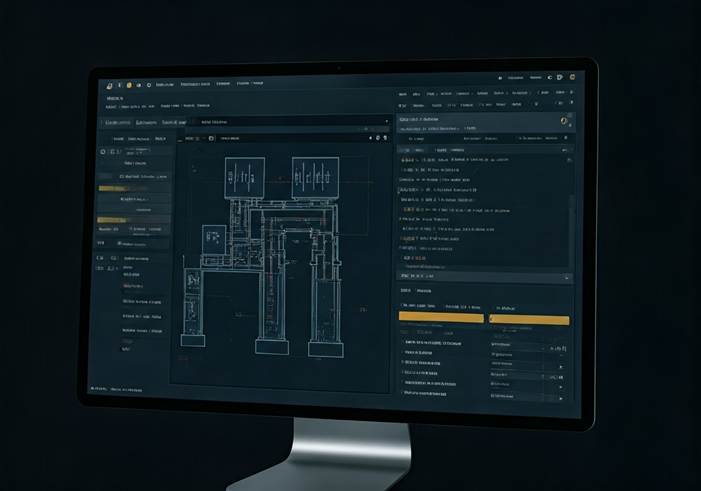
Advanced Techniques for MEP Clash Detection
As technology grows, the ways we find MEP clash detection in the construction industry are improving. We now have better tools and methods that help us find conflicts more accurately and efficiently. These new advancements help save time and money, while also making construction safer and more sustainable.
Utilizing 3D Modeling Tools for Clash Detection
3D modeling software is vital for today’s construction projects. It plays an important role in clash detection. We no longer rely only on 2D drawings, which can miss clashes until work starts. 3D modeling tools help create detailed, smart models that show the building and its systems clearly. This makes clash detection a quicker and more effective task.
Here’s how 3D modeling tools improve clash detection:
- Visualizing Spatial Relationships: 3D models show a clear view of the building. This helps to easily find clashes between MEP systems, structural elements, and architectural parts.
- Automating Clash Detection: Many 3D modeling software applications have built-in clash detection tools. These tools automatically find and highlight spots where elements meet or where there are clearance issues.
- Facilitating Early Resolution: By spotting clashes early in the design phase, 3D modeling lets architects, engineers, and contractors work together. They can solve problems before building starts, which reduces expensive rework.
The Advantages of 4D Scheduling in Clash Detection
4D scheduling is an important part of building information modeling (BIM). It goes beyond clash detection by adding time as a fourth dimension. This method helps project teams see the order of construction. It also helps spot possible problems that could happen with different trades and their activities. Imagine having a tool that lets you practice the construction process. This tool shows issues before they happen in real life.
Here are some great benefits of using 4D scheduling for clash detection:
- Finding Clashes Early: 4D scheduling helps find clashes that aren’t easy to see in regular 3D models. By simulating the construction order, teams can plan for and fix problems related to timing and activity order.
- Better Site Planning and Safety: 4D scheduling improves site planning by uncovering possible delays and space issues that could happen during construction.
- Clearer Communication and Teamwork: 4D scheduling offers a clear view of the project timeline. This encourages better communication and teamwork among project stakeholders, helping everyone make better decisions.
Best Practices for Efficient MEP Clash Resolution
Using good clash resolution methods is very important. It helps reduce risks from design conflicts and keeps the construction process running smoothly. When project teams follow the best practices for MEP clash resolution, they can cut delays, manage costs, and improve the project’s overall quality.
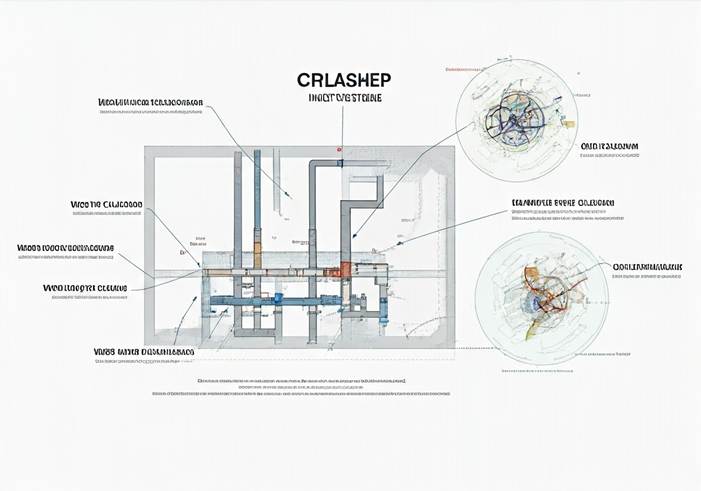
Proactive Clash Detection Strategies for Project Managers
Project managers play a key role in making sure MEP clash detection happens early and often in the project lifecycle. Here are some strategies for project managers:
- Early Clash Detection: Start clash detection in the early design stages. Make regular checks a normal part of the design process as it develops.
- Define Responsibilities: Set clear roles for detecting and fixing clashes. Appoint specific people or teams to take charge of this task.
- Establish Clear Communication Channels: Keep communication open among project stakeholders. Use teamwork platforms to share clash reports and updates about how to solve them.
Collaborative Solutions for Clash Resolution Among Stakeholders
Successful clash resolution depends on teamwork among everyone involved in the construction project.
- Foster a Culture of Collaboration: Support open talks and teamwork among architects, MEP engineers, contractors, and others.
- Utilize BIM Collaboration Tools: Use Building Information Model (BIM) tools that let all people see, share, and update the model at the same time.
- Regular Coordination Meetings: Hold regular meetings to discuss clash reports, suggest solutions, and check on progress for clash resolution.
Case Studies: Successful MEP Clash Resolution
Real-world examples show how MEP clash detection works well in construction. Looking at case studies helps us see how teams have dealt with clashes in big projects. These cases reveal the real benefits of using clash detection in construction processes.
Overcoming Complex Clashes in Large-scale Construction Projects
In big construction projects like airports, hospitals, and stadiums, there is a high chance of MEP clashes. These projects are large and involve many people and subcontractors. This makes it very important to find and fix these clashes effectively. Construction professionals use advanced BIM software that can detect clashes to handle all the detailed information and spot possible problems.
These large projects also have complicated designs, complex system interactions, and strict rules. This makes clash detection more difficult. But, by using solid clash detection processes, project teams can avoid expensive rework, stop delays, and successfully complete these major projects.
Innovative Approaches to Clash Resolution in Renovation Projects
Renovation projects come with special challenges for MEP clash detection. Teams must deal with the current building setup and combine new systems with older parts. In new construction, the design starts fresh. But in renovations, teams have to work within the limits of an already built structure. This often results in unexpected clashes during the design and building stages.
To solve this, construction teams use detailed laser scans of the existing building. This helps them create an accurate as-built BIM model. They then use this model to find possible clashes between the current components and new MEP plans. This way, teams can develop smart clash resolution strategies that reduce issues with the present structure and help fit in the new systems better.
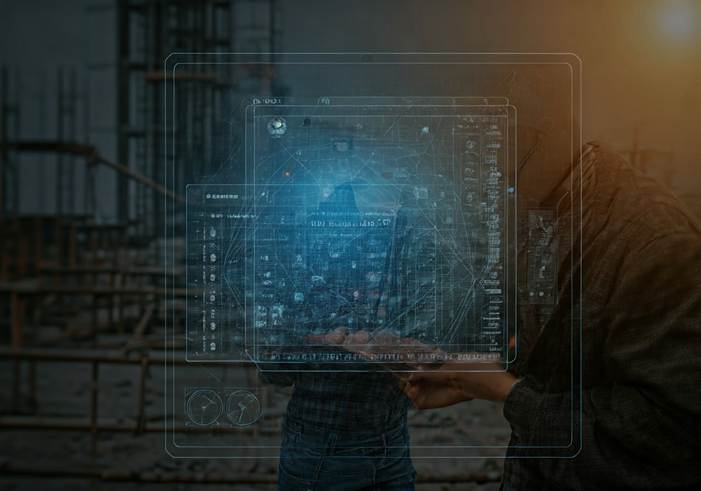
Choosing the Right MEP Clash Detection Software
Choosing the right MEP clash detection software is very important for managing clashes well. There are many options on the market. So, it is essential to look closely at the features of different software. This helps you find the best option for your project needs and budget.
Key Features to Look for in Clash Detection Software
When you choose MEP clash detection software, think about these important features:
- User-Friendly Interface: It’s important to have an interface that is easy to use. This helps the project team get started quickly. Look for software that has a clear design, simple menus, and easy-to-find tools.
- Comprehensive Clash Detection Capabilities: Make sure the software can find different types of clashes. These include hard clashes, soft clashes, and workflow clashes. It should also let you set clash tolerances and rules that fit your project’s needs.
- Reporting and Visualization: Search for software that has strong reporting features. This should include detailed clash reports that show where clashes are, how serious they are, and which elements are involved. Good visualization tools like 3D models and 2D drawings that highlight clashes are key to making clash information clear and easy to share.
Comparing Top MEP Clash Detection Tools: Pros and Cons
Several top MEP clash detection tools have many useful features:
Navisworks:
- Pros: This is a leading software known for excellent clash detection and coordination. It also offers 4D and 5D simulation features to help with scheduling and cost analysis.
- Cons: It can be costly and needs special training to use.
Autodesk BIM Collaborate:
- Pros: This is a cloud-based platform that makes it easier for project stakeholders to communicate and coordinate. It provides real-time clash detection and helps manage issues.
- Cons: Some features might need extra subscriptions or special integrations.
Trimble Connect:
- Pros: This platform is great for construction management. It has strong BIM features and includes clash detection. It promotes collaboration and sharing data.
- Cons: It can be hard to learn at first, and some advanced features might need other Trimble software to work well.
Implementing MEP Clash Resolution Services: A Step-by-Step Guide
Implementing clash resolution services requires a clear and organized method. This helps to find and fix clashes quickly. A step-by-step guide will make the process smoother. It will also help you get the most out of clash detection.
Initial Assessment and Planning for MEP Clash Detection
The first step to using MEP clash detection services is to do a complete assessment and plan:
- Project Needs: Learn what clash detection your project needs. Think about the project size, complexity, and detail in your BIM models.
- Software Choice: Pick the right clash detection software that fits your project needs, budget, and team skills.
- Training the Team: Give team members proper training on how to use the clash detection software well. Make sure they know how to read reports, share findings, and help with clash resolution.
Integration of MEP Clash Detection Services into Existing Workflows
To use MEP clash detection services successfully, it’s important to fit them into the current work process. This helps ensure a smooth transition and better results. Taking steps gradually usually works best. It lets teams get used to new methods and tools without feeling overwhelmed.
- Start Small: Begin by applying clash detection on a small project or a single part of a bigger project. This approach helps teams learn the process and find any problems early.
- Clearly Define Processes: Set clear rules and steps for clash detection, reporting, and solving issues. This helps keep everything consistent and accountable throughout the project.
- Communicate Regularly: Promote open talk among team members and stakeholders. Share clash reports, project updates, and any problems regularly.
Future Trends in MEP Clash Detection Technology
The world of MEP clash detection is always changing. New tools and creative ideas are coming up to make the process better. As the construction industry uses more digital tools and bases decisions on data, we expect even more progress in clash detection. These changes will not only make clash detection more accurate, but they will also change how clash information is used during the project lifecycle.
The Evolution of AI and Machine Learning in Clash Detection
Artificial intelligence (AI) and machine learning (ML) are changing how the construction industry works, especially in clash detection. These tools can help make clash detection faster, more accurate, and can give early warnings to stop problems before they happen.
- Automated Clash Grouping: AI and ML can look at clash data and sort similar clashes. This helps teams fix ongoing issues more easily.
- Predictive Clash Detection: By using past project data, AI and ML can find areas where clashes might happen as the design changes. This lets teams act early to prevent clashes.
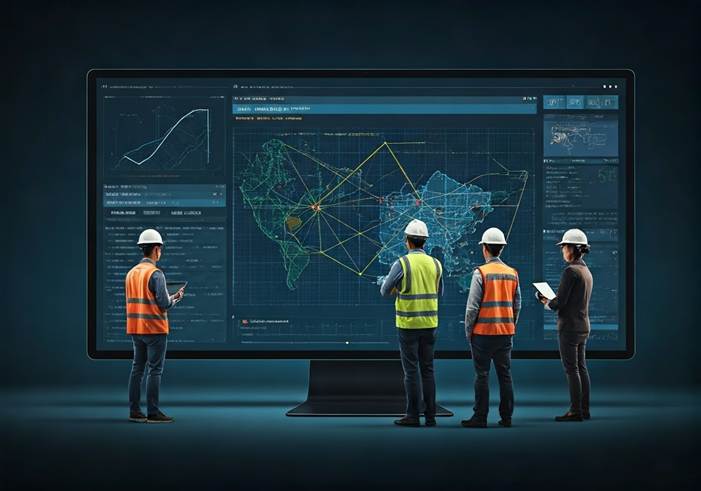
Predictive Analytics for Preemptive Clash Resolution
The future of clash detection is changing from just fixing problems to stopping them before they happen. This is where predictive analytics is important. It uses data to predict and reduce clashes in the BIM model before they show up. By looking at past project data, like previous clash reports, design changes, and project timelines, predictive analytics can find patterns. These patterns can show us where clashes are more likely to happen in certain areas or systems.
Picture a system that not only finds existing clashes but also forecasts where new ones might happen based on old project data and current designs. This is the potential of predictive analytics in MEP clash detection. It offers a future where clashes are managed before they disrupt project schedules and costs.
Conclusion
Expert MEP clash resolution services are very important for smooth construction. They use BIM and advanced clash detection to help avoid problems during projects. Working together and using smart strategies makes it easier to solve clashes between different people involved. Picking the right MEP clash detection software, which has the right features, is key to fixing these clashes well. With the growth of AI and predictive analytics in clash detection tech, we can expect great improvements in stopping problems before they happen. Using these tools and methods will make construction work better and results more successful.
Frequently Asked Questions
What is MEP in construction, and why is clash detection critical?
MEP means Mechanical, Electrical, and Plumbing. These systems are very important in a building. Clash detection is very important too. It helps find and fix problems between these systems during the design stage. This process can stop expensive fixes and delays later on during construction.
How does BIM facilitate better clash detection and resolution?
BIM helps find clashes by using a shared 3D model. This lets different disciplines work together on their designs. They can spot clashes early and work together to fix them. This reduces extra work during construction.
Can clash detection save time and resources in construction projects?
Clash detection is a great tool that saves time and resources in construction. By finding and fixing clashes in the design phase, we can avoid expensive rework and delays. This helps us use resources more efficiently.
What are the challenges in implementing clash detection software?
Implementing clash detection software can be tough. You may face some challenges. First, there is the cost of the software and training. Next, some team members might resist the change. Additionally, managing data and making it work with current workflows can be complex. To overcome these issues, it is important to plan carefully. Good communication and proper training can help make the process smoother.
How often should clash detection be performed during a project?
The need for clash detection varies with how complicated a project is and what stage it is in. It’s a good idea to do clash detection often during the design phase. You should also do it at important times, like after big design changes or right before major construction starts.
